BigCommerce App Installation Guide
BigCommerce is a leading cloud-based ecommerce platform for businesses of all sizes. Using its powerful online store management features, you can set up an online store, sell your products, and rapidly grow your business.
Contentstack Marketplace allows you to easily install the BigCommerce application and use it within your stack to add products from the BigCommerce store into the entries of your content type.
Prerequisites
- BigCommerce account
- Contentstack account
- Access to the Contentstack Organization/ Stack as the Owner/ Admin
This step-by-step guide explains how to install and configure BigCommerce in your stack.
Steps for Execution
- Retrieve your API client credentials from BigCommerce
- Install and Configure BigCommerce in Marketplace
- Use BigCommerce within your Stack
-
Retrieve your API Client Credentials from BigCommerce
- Log in to your BigCommerce account.
- Follow BigCommerce’s detailed guide to retrieve the API client credentials of your BigCommerce store.
The credentials include the API Path URL and access token of your BigCommerce store API client.
Note: Make a note of the API URL and access token as these will be required while configuring the BigCommerce app in Marketplace.
While creating the API account in BigCommerce, make sure that read-only is selected under Products.

Additional Resource: Refer to the Authenticating BigCommerce’s REST APIs page to get the API credentials.
-
Install and Configure BigCommerce in Marketplace
To install the app in Contentstack, log in to your Contentstack account and follow the steps below:
- In the left-hand side primary navigation, click the Marketplace icon.
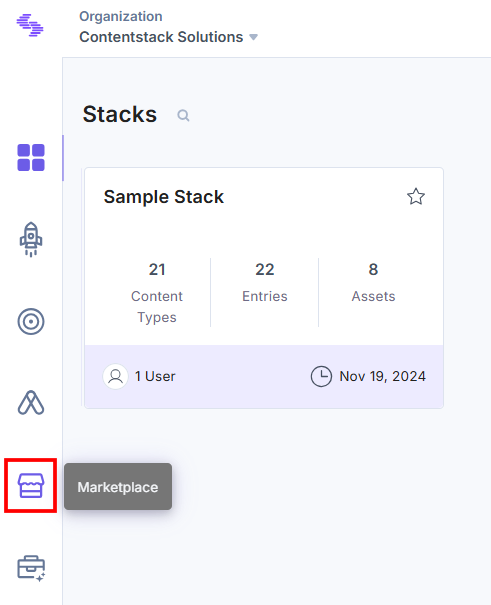
- Click Apps from the left panel.
- Within the Marketplace, you can see all available apps. Hover over the BigCommerce app and click Install.
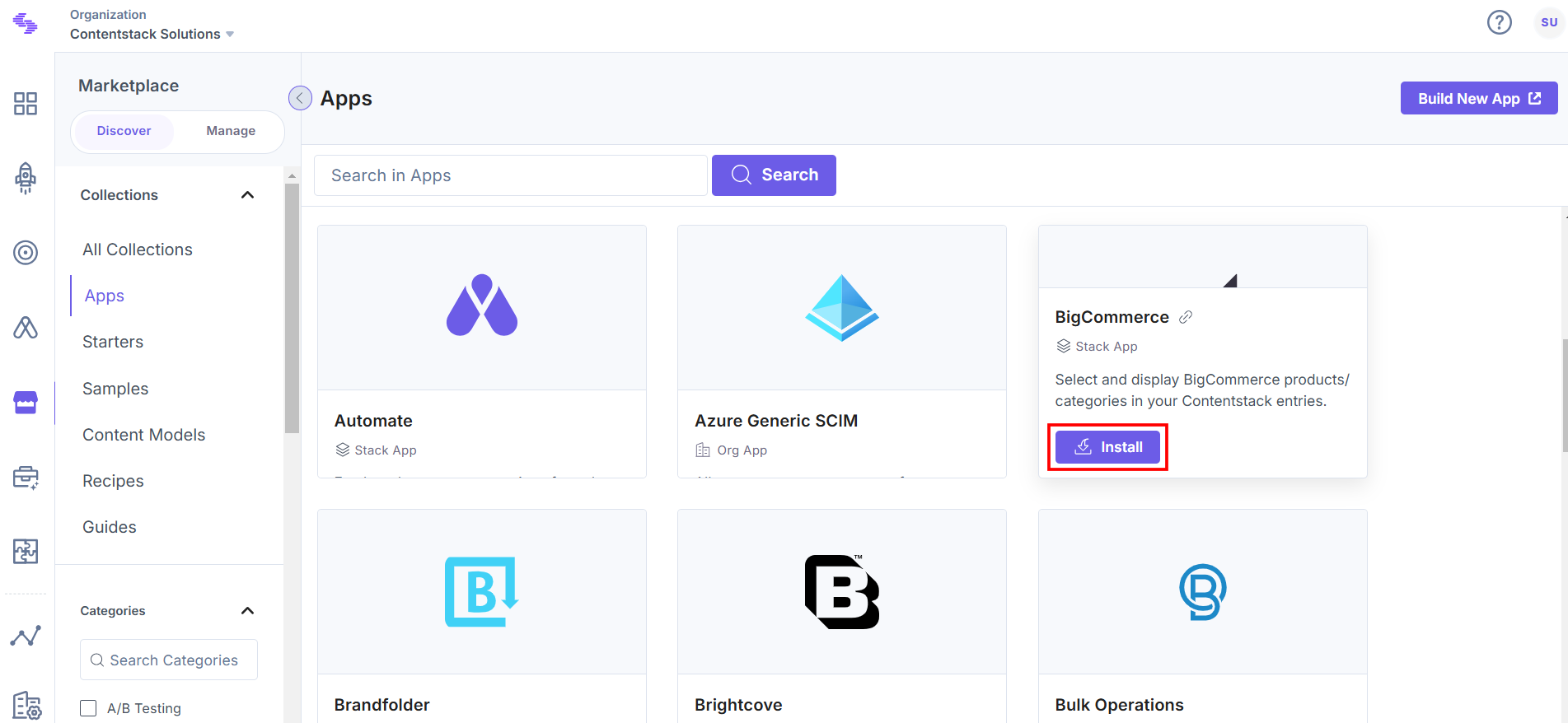
- In the pop-up window, select the stack where you want to install the BigCommerce app, accept the Terms of Service, and click the Install button.
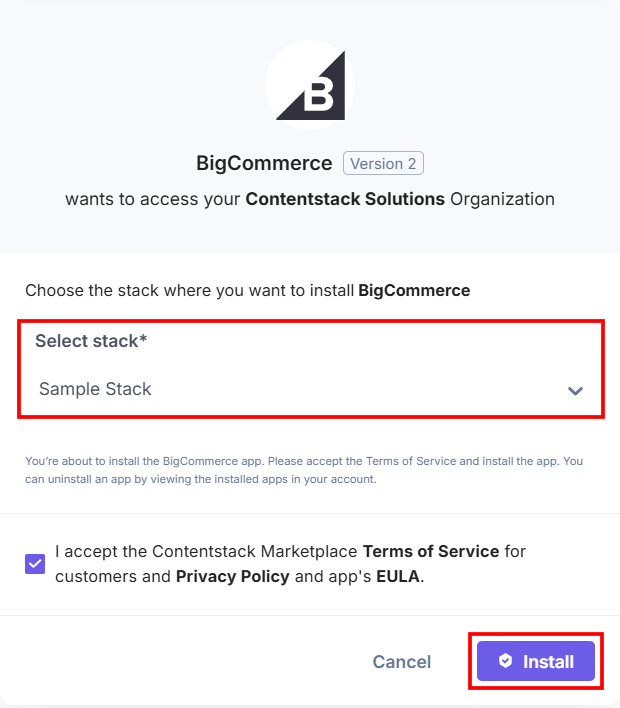
- On the Configuration screen, you can add multiple configurations for BigCommerce. To do this, follow the steps given below:
- Click the + New Configuration button to add new configuration details.
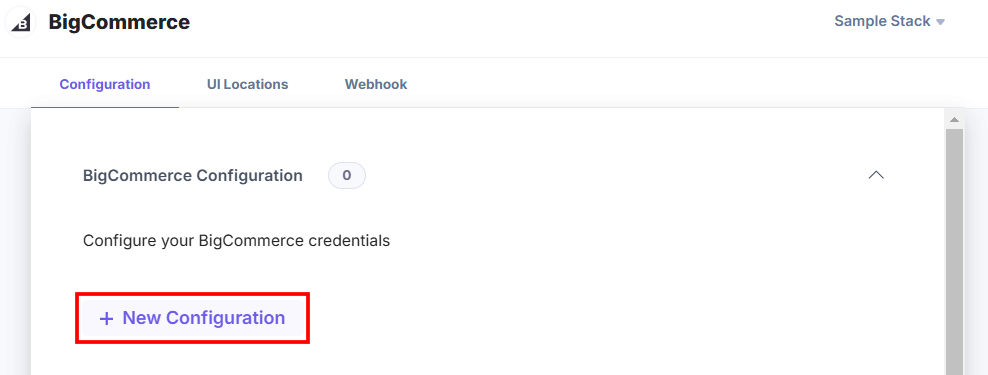
- In the Add Configuration modal, enter the configuration Name and click Add.
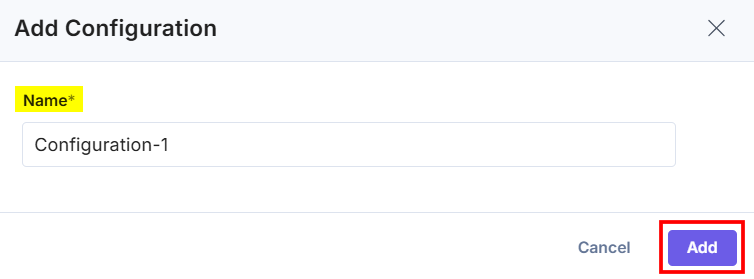
- After adding the configuration, enter the following details:
- Store ID: Enter the BigCommerce API URL we retrieved in step 1.
- Auth Token: Enter the BigCommerce Auth token that we retrieved in step 1.
- Is Multi-Storefront?: Enabling this option adds a channel filter to your stack to filter the products and categories.
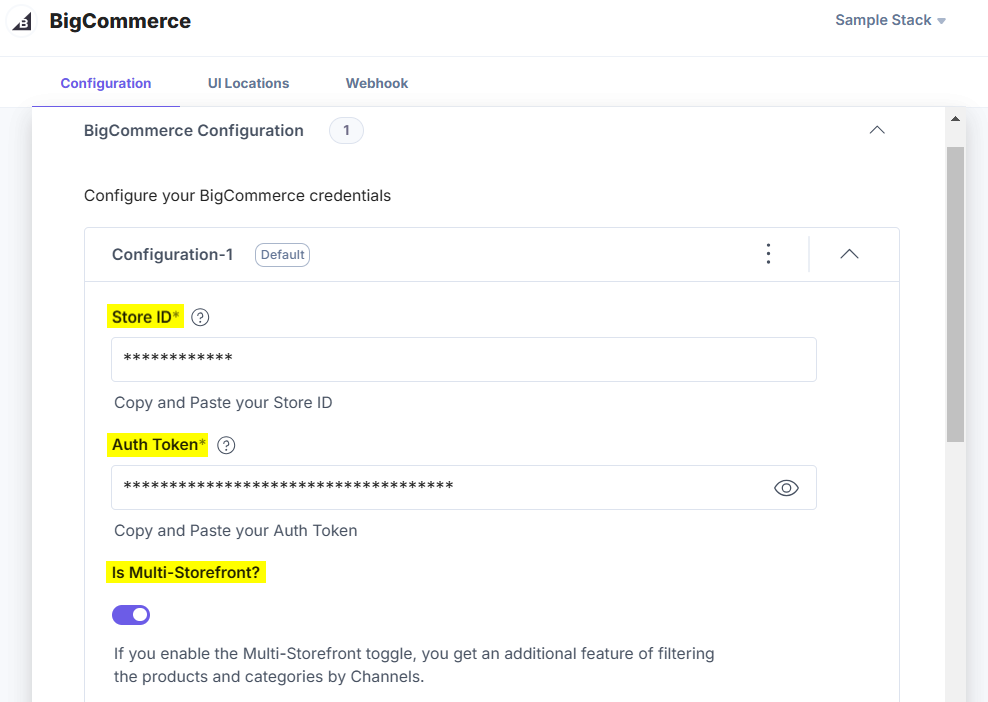
- Set as Default: To set this configuration as the default, click this checkbox.
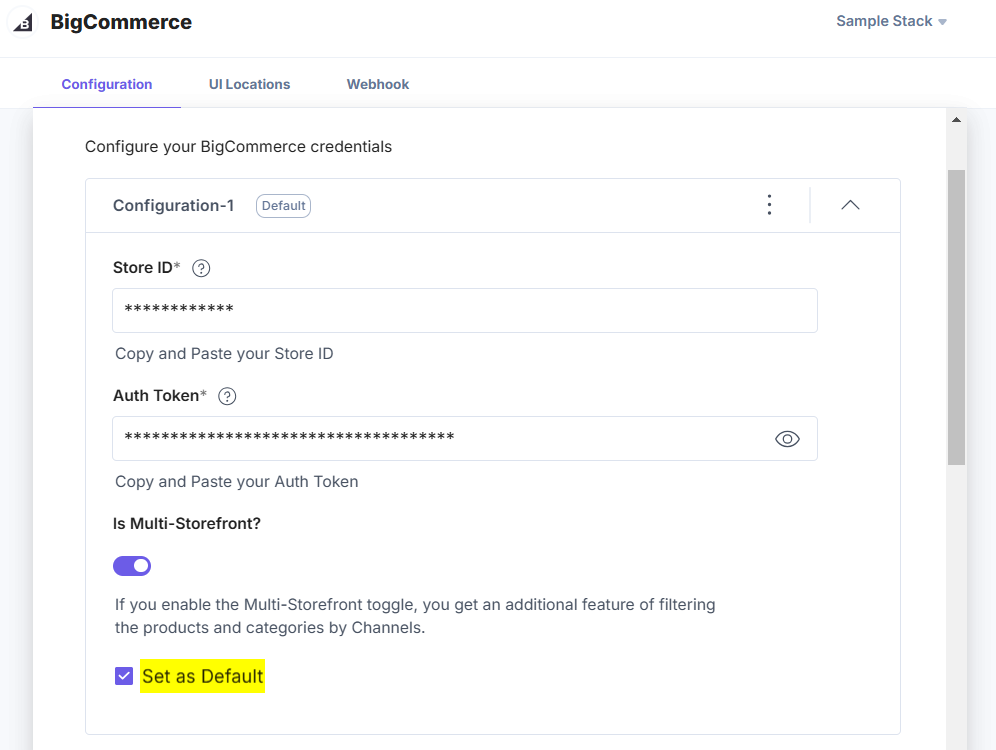
Alternatively, you can set a configuration as the default by clicking the three dots on the top-right side of the configuration section and then selecting Set as Default.
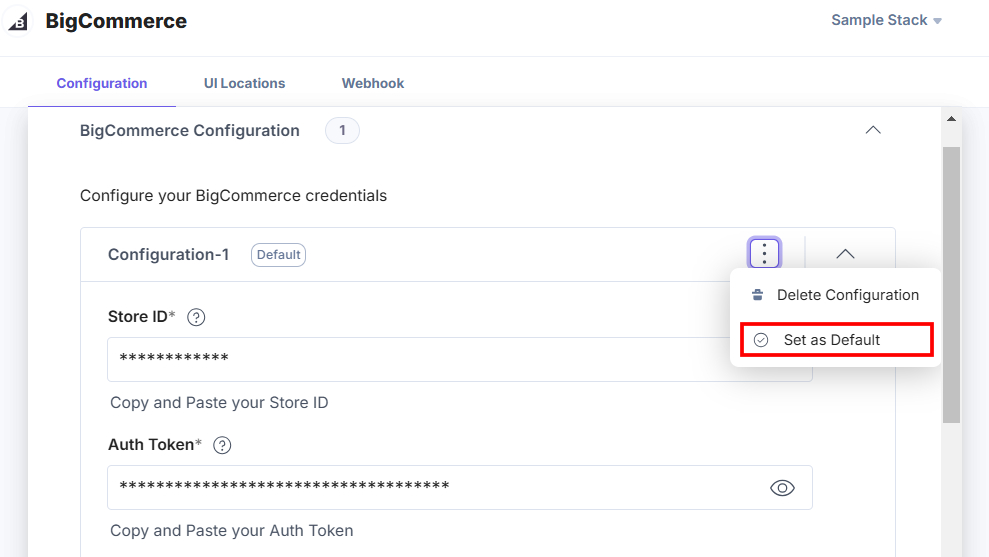
Note: At least one app configuration should be selected as the default.
Similarly, you can add multiple configurations by following the steps discussed above.
- To delete the configuration, click the three dots and select Delete Configuration.
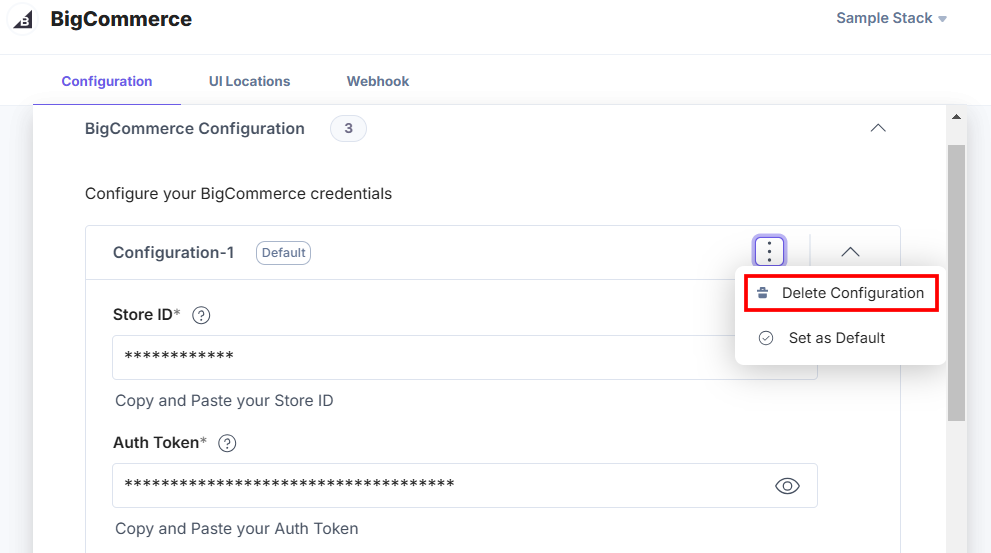
In the Confirm Deletion modal, add the configuration name and click Delete.
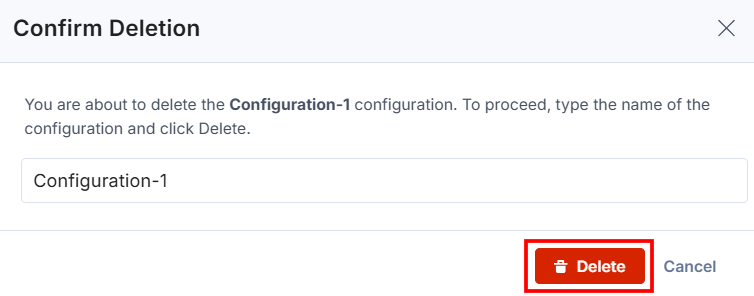
- For an existing user, the credentials will be added as the default configuration, and named as legacy_config.
Warning:
- legacy_config is a reserved keyword and you cannot use it in adding new configurations.
- If you delete the legacy_config configuration, data loss may occur and you will not be able to access the products and categories from the related accounts.
- Choose BigCommerce Keys to Save in Entry: Choose how to save the data fetched from the BigCommerce account in Contentstack entries.
- If you select the All Fields option, you can select only a limited number of products in the entry.
- For Custom Fields, you can search and add specific BigCommerce Fields you want to save in entries.
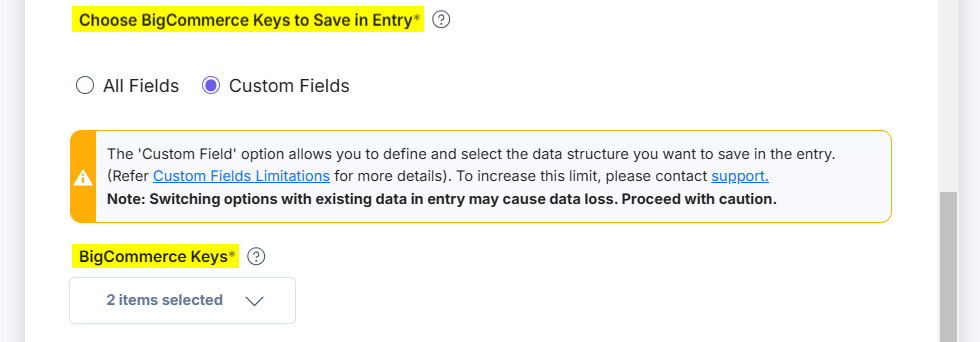
If you select Custom Fields then the BigCommerce Keys drop-down appears. By default, id and name keys are already selected. If you want to create a new key, click the + New Key Field option.
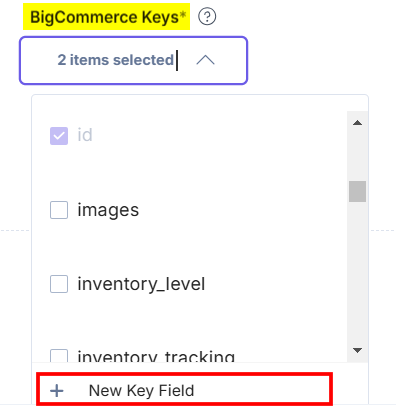
In the Add BigCommerce Key Field modal, enter the Key Name or Path and click the Create button to create a new key.
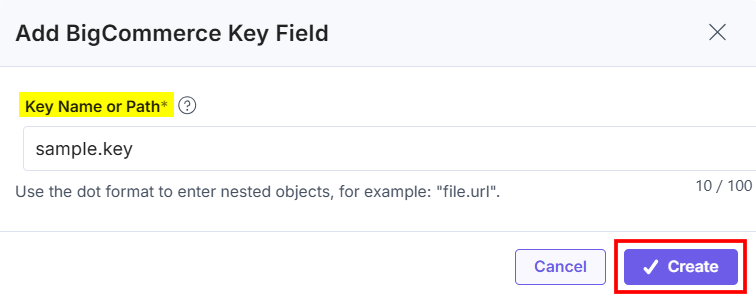
- Choose Category Structure to Save in Entry: Choose how to save the category in Contentstack entries.
- If you select the Old Category Structure option, you are saving the data using id.
- If you select the New Category Structure option, you are saving the data using category_id.

Additional Resource: To learn more, refer to BigCommerce Catalog - Categories documentation.
- Click the + New Configuration button to add new configuration details.
- After adding the configuration details, click the Save button.
- On the UI Locations tab, you can see the predefined app locations. You can use the toggle button corresponding to each UI location to enable or disable it based on your requirements.
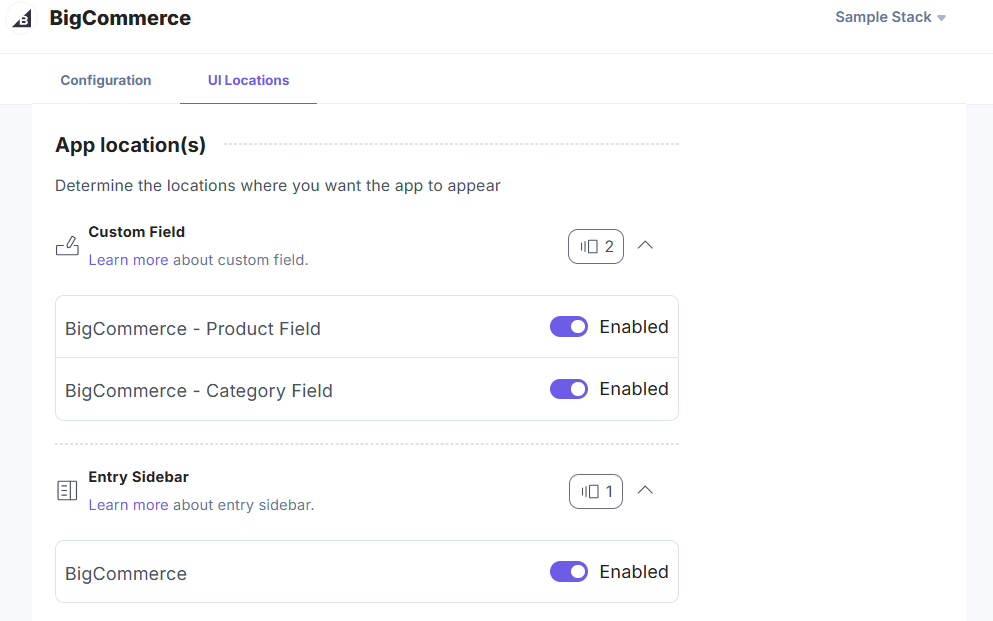
Note: The app requires at least one UI location to be enabled, otherwise you will not be able to save your app configuration settings.
- If the webhook is enabled for your app, you can view the webhook logs under the Webhook tab.
Additional Resource: For more information on UI location and webhooks, please refer to the Installed Apps guide.
- Click Open Stack to start using the BigCommerce application.
- In the left-hand side primary navigation, click the Marketplace icon.
-
Use BigCommerce within your Stack
To use the BigCommerce application within an entry of your stack, follow the steps given below:
- Go to your stack and click the Content Models icon on the left navigation panel, and click the + New Content Type button.
- Create a content type by adding relevant details as displayed below:

Note: With the BigCommerce app, you can fetch products as well as product categories. To fetch both products and categories in an entry, we recommend you create two custom fields: one for products and another one for categories.
- In the Content Type Builder page, add a Custom field for product in your content type by clicking the Insert a field link represented by a + sign.
- Under Select Extension/App, select BigCommerce - Product Field and click Proceed.
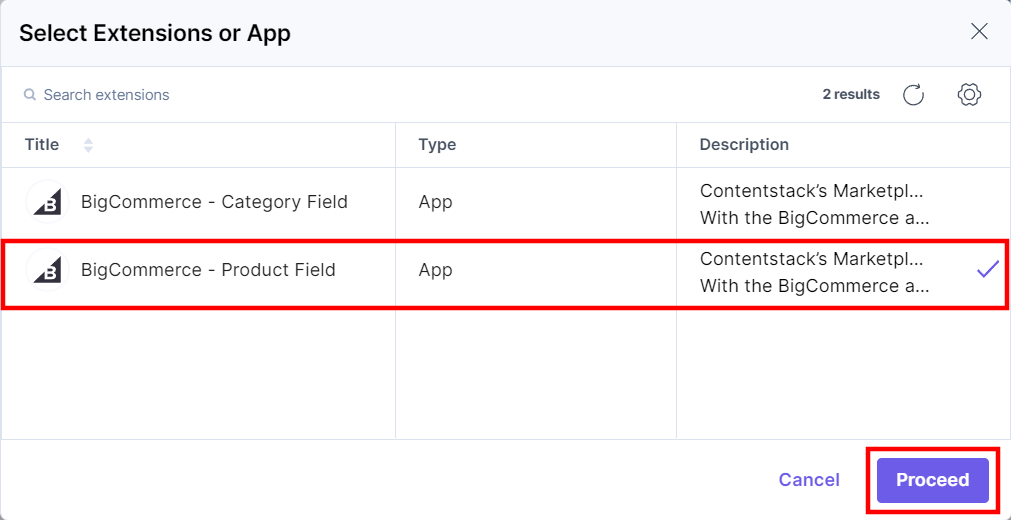
- Add another Custom field for category in your content type by clicking the Insert a field link represented by a + sign.
- Under Select Extension/App, select BigCommerce - Category Field and click Proceed
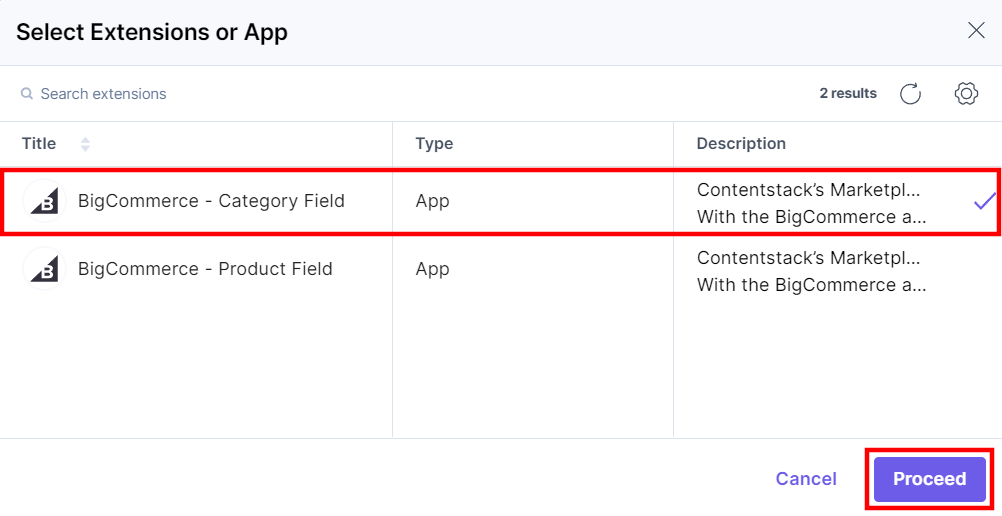
- Under Advanced properties, you have the option to set the Config Parameter for all entries of a particular content type. If you do so, it overrides the default app configuration you set at the time of app installation on the Configuration screen.
The key:value passed in the configuration object overrides the default app configuration settings.
If you want to use a different BigCommerce configuration for any custom field within the same stack, you need to specify the configuration name in the Config Parameter as follows:
Configuration Object:
{ "config_label": [ "config2" ] } - After adding the app, click Save or Save and Close to save your changes.
- In the left navigation panel, navigate to the Entries page and click + New Entry to create a new entry for the above content type. And then click Proceed. You will see the BigCommerce custom fields on your entry page as shown below:
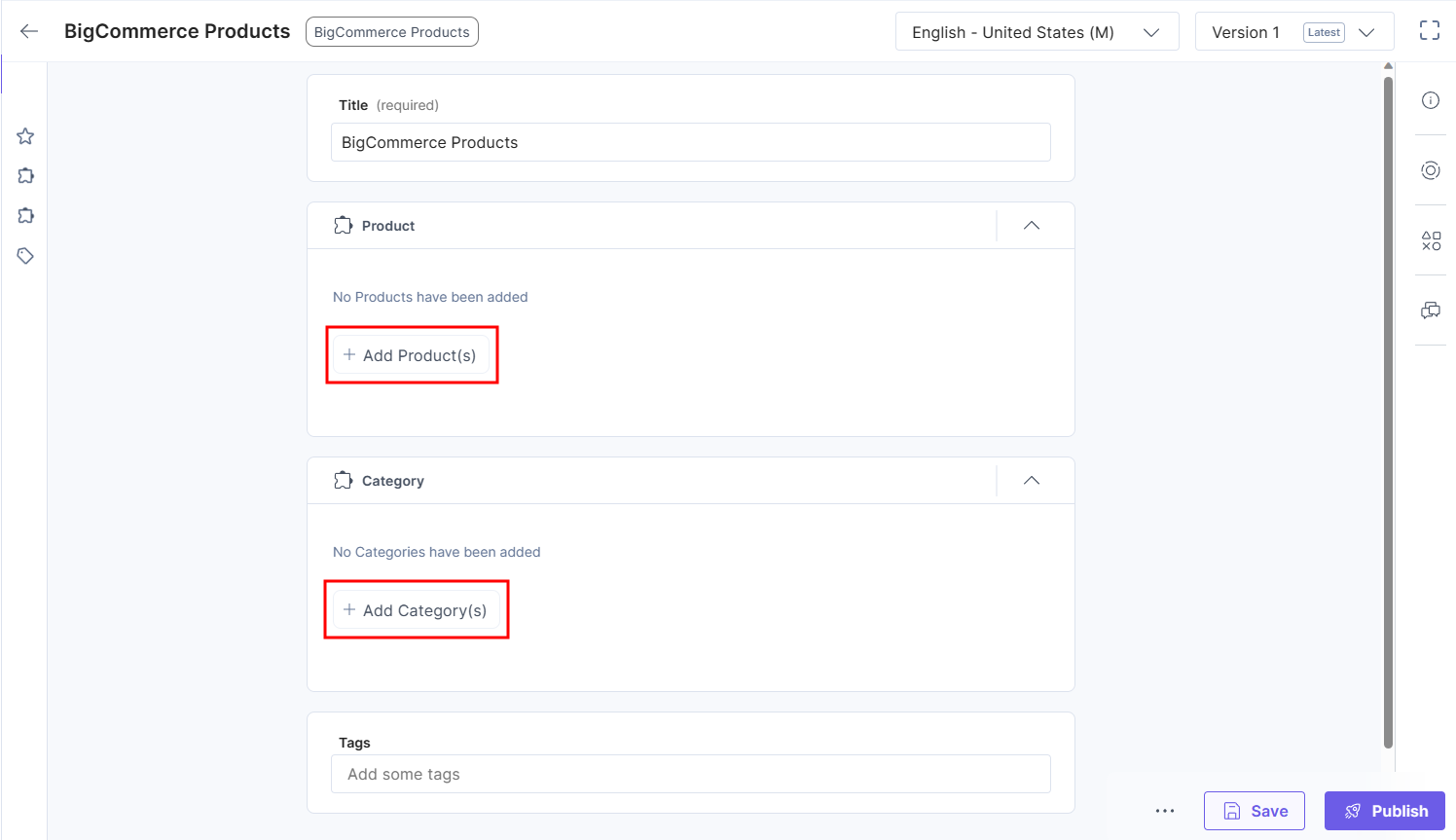
- With the latest app update, you can filter products and categories by Channels. To choose product(s) according to the categories or channels:
- Select the option from the Select Category drop-down to segregate the products based on the categories.

- Select the option from the Select Channel drop-down to segregate the products based on the channels.
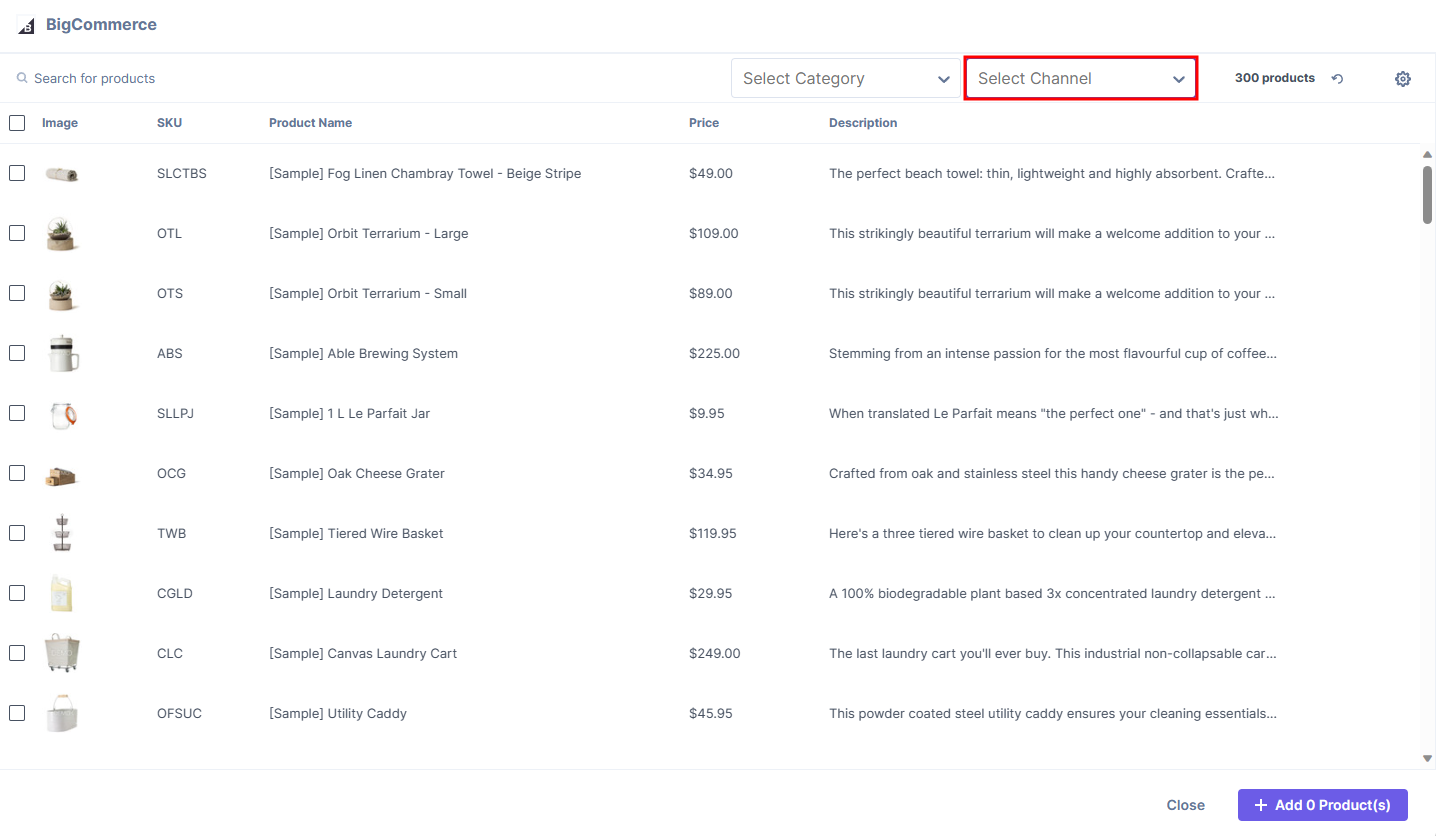
- Select the option from the Select Channel drop-down, then choose the preferred category from the Select Category drop-down for extensive filtering.
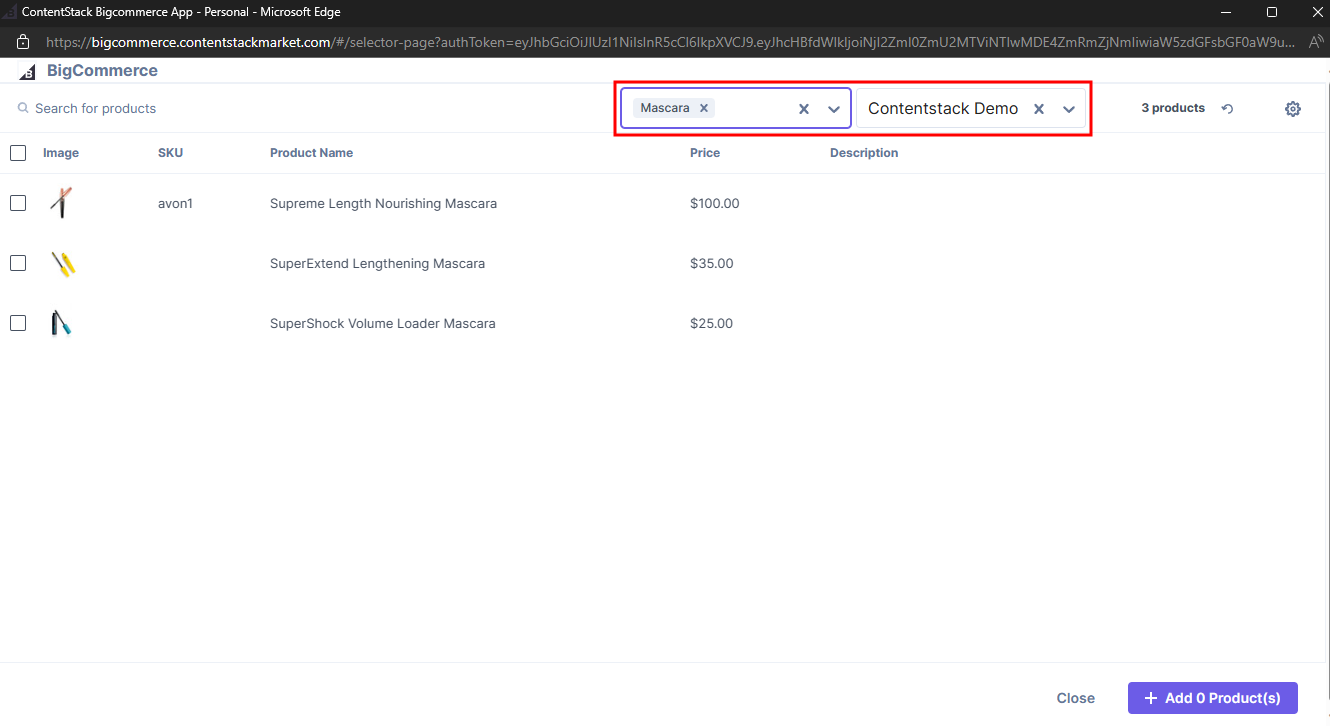
- Select the option from the Select Category drop-down to segregate the products based on the categories.
- Click the Add Product(s) button and select the products from your BigCommerce store to add them to your entry.
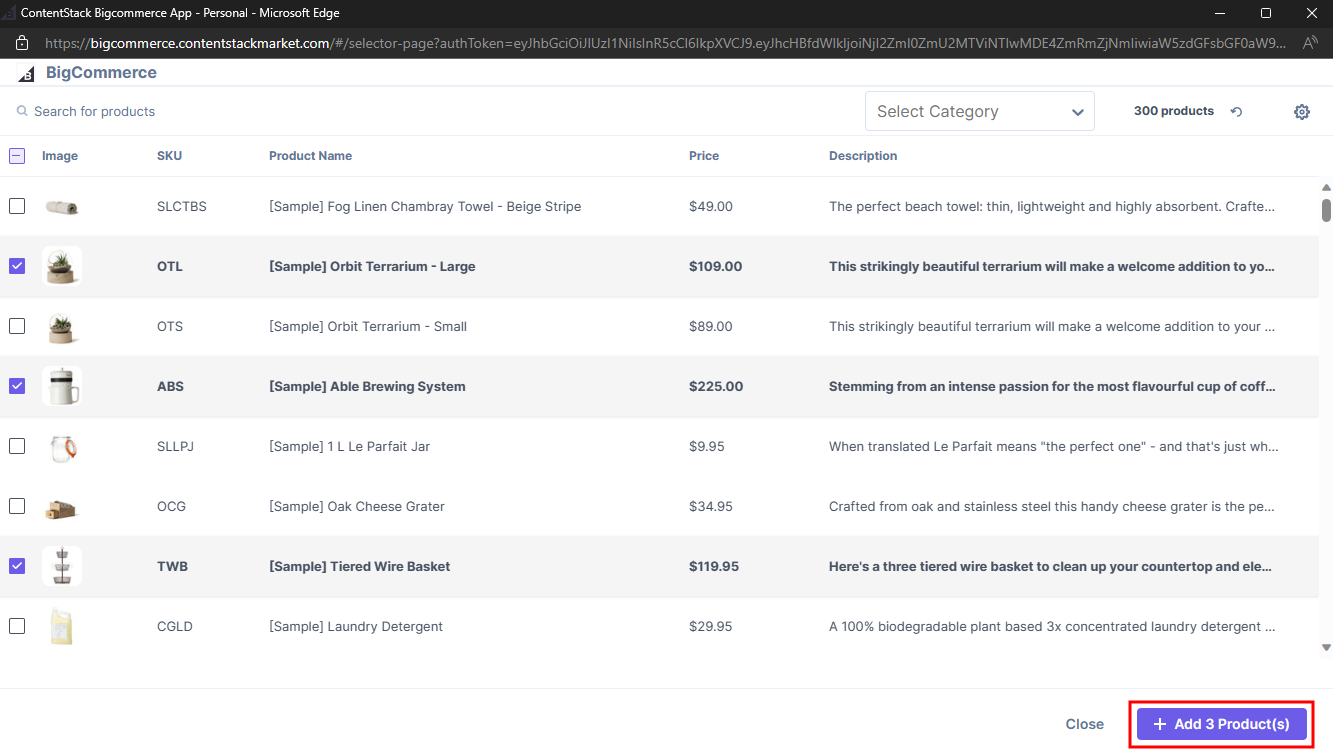
- Click the Add Category(s) button and select the categories from your BigCommerce store to add them to your entry.
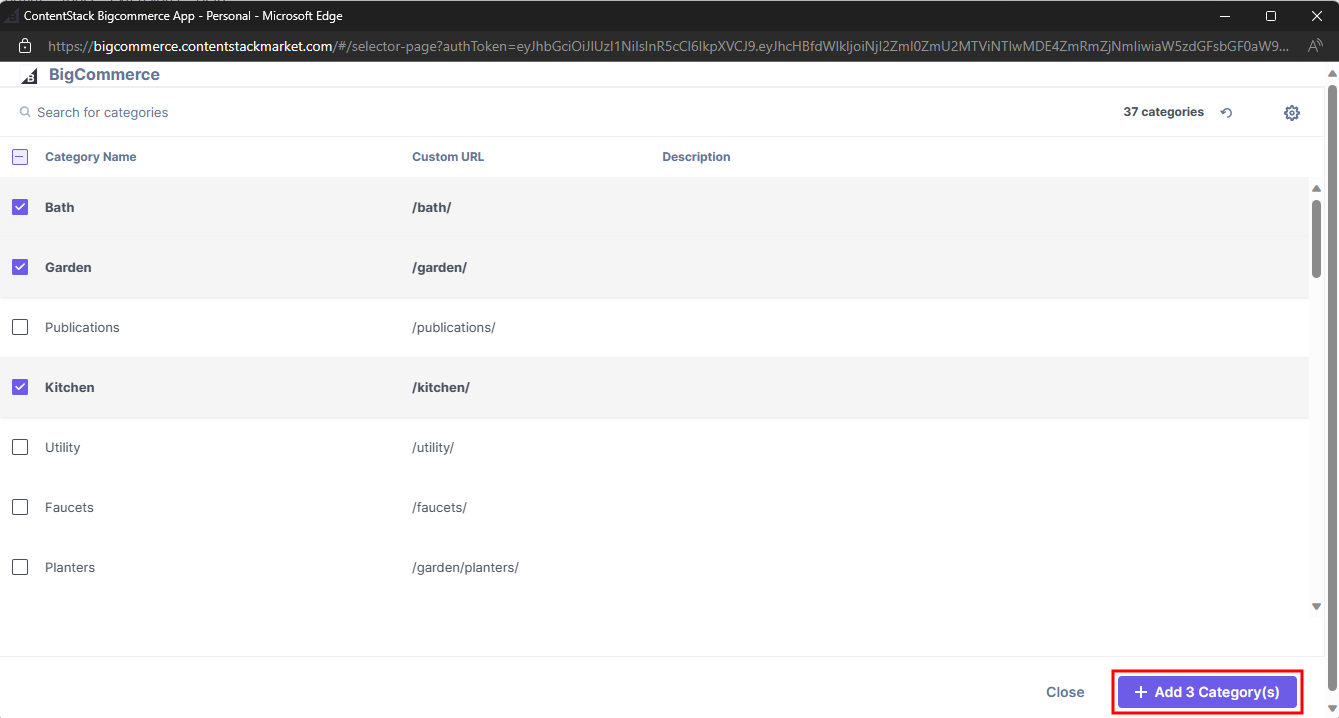
- The products and categories you select are referenced within your entry. Finally, click Save to save your entry.
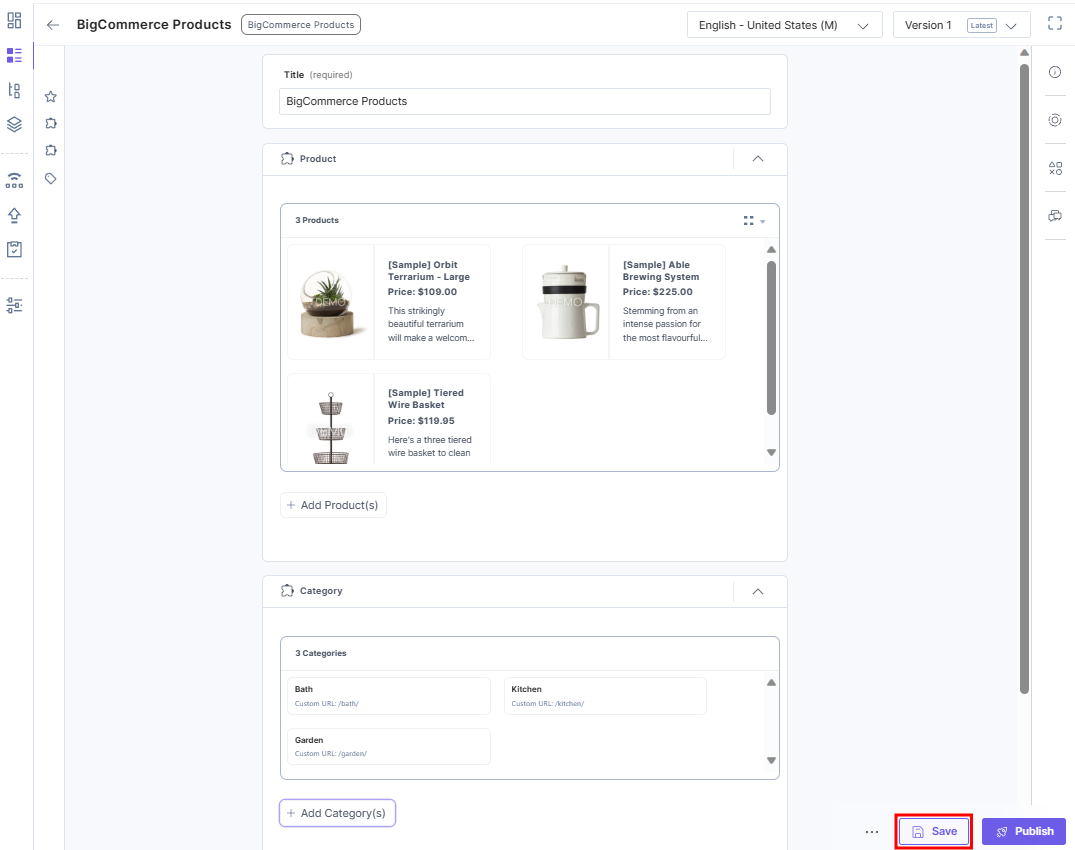
- You can drag and drop the products to arrange them in required order in both Thumbnail and List views.
- Thumbnail View: It displays the images, names and prices of the selected product.
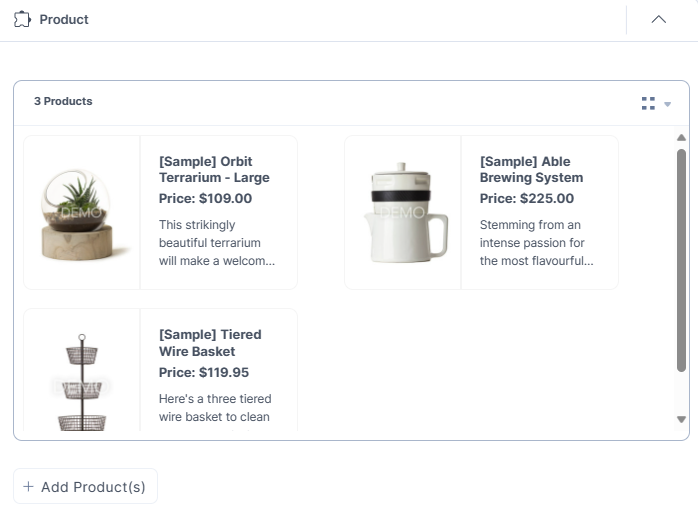
- List View: Lists display the names and prices of the selected product.
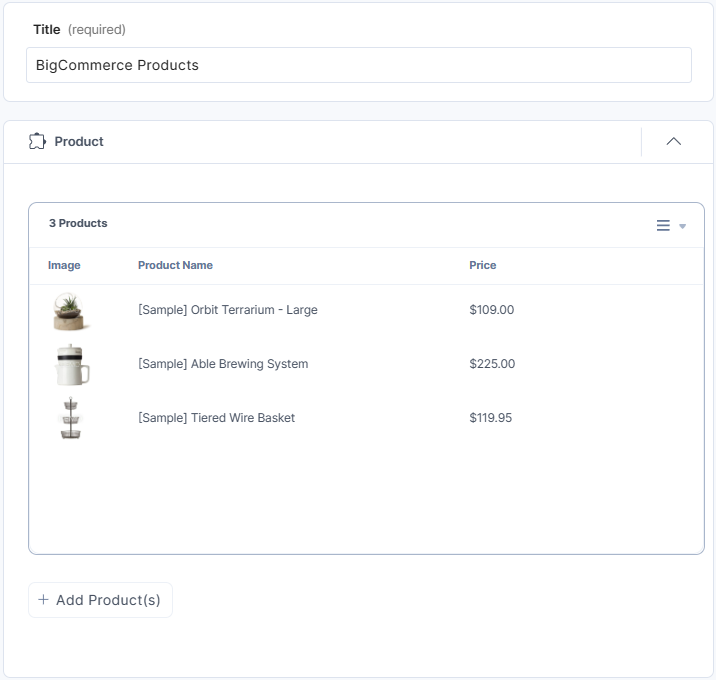
- Thumbnail View: It displays the images, names and prices of the selected product.
- Click the Save button to save your entry.
You can view more product details in Sidebar Widget.
Note: You must save your entry to get the product details in the Sidebar Widget.
- In the right navigation panel, select Widgets and then select BigCommerce to view the product details.
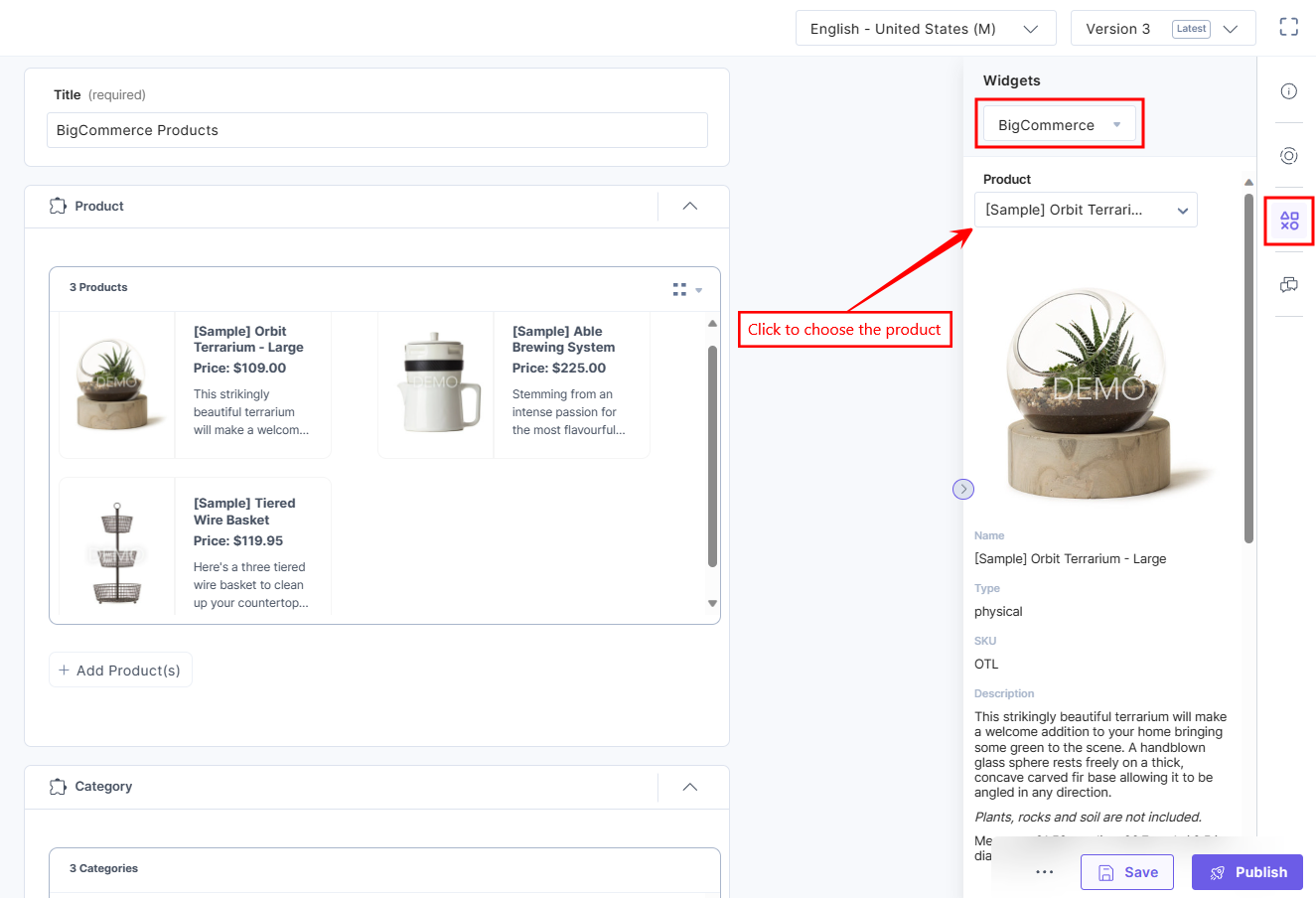
- Enter the product name in the Product drop-down to search and view the product details.
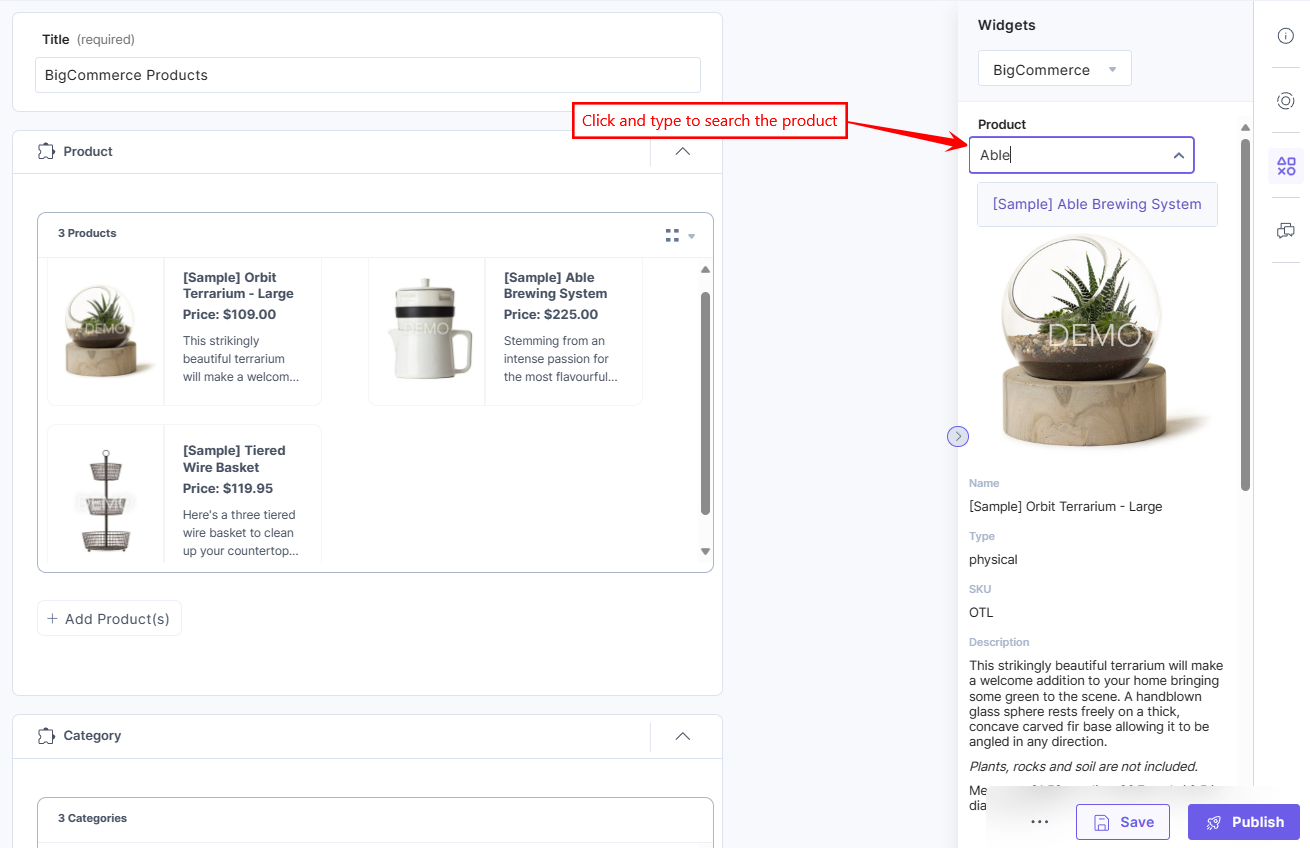
Note:
- If you delete a configuration with products and categories, and create a new one with the same label but different credentials, the original products and categories may not work correctly.
- For a deleted configuration, the associated products and categories are not removed from the entry, instead a warning icon is displayed on them.




.svg?format=pjpg&auto=webp)
.svg?format=pjpg&auto=webp)
.png?format=pjpg&auto=webp)






.png?format=pjpg&auto=webp)